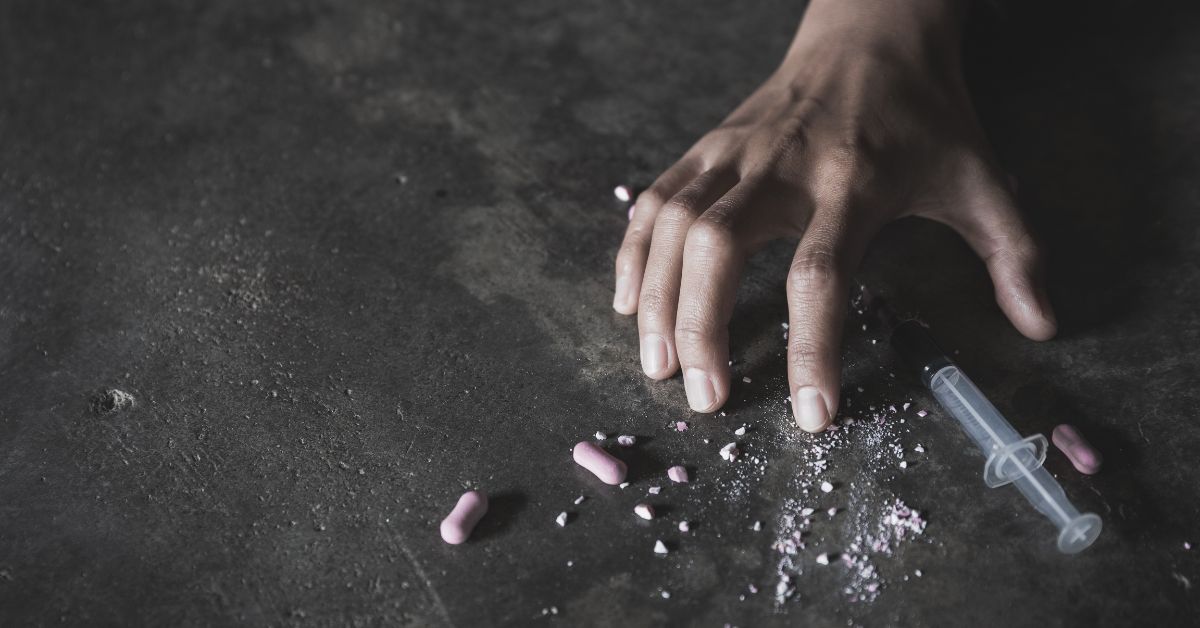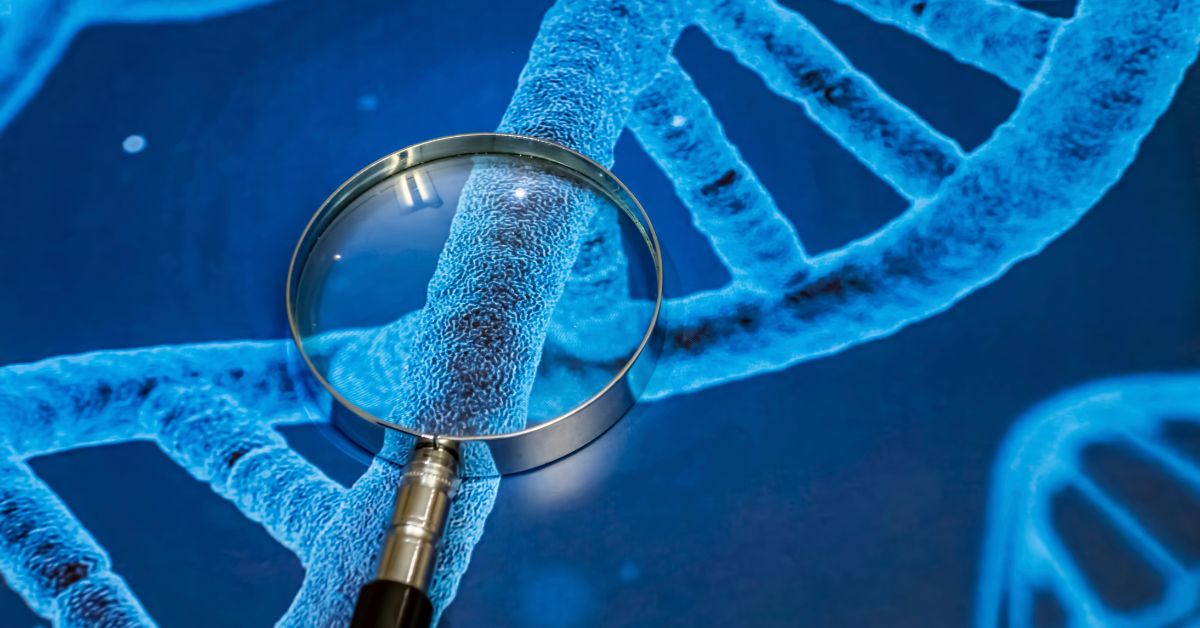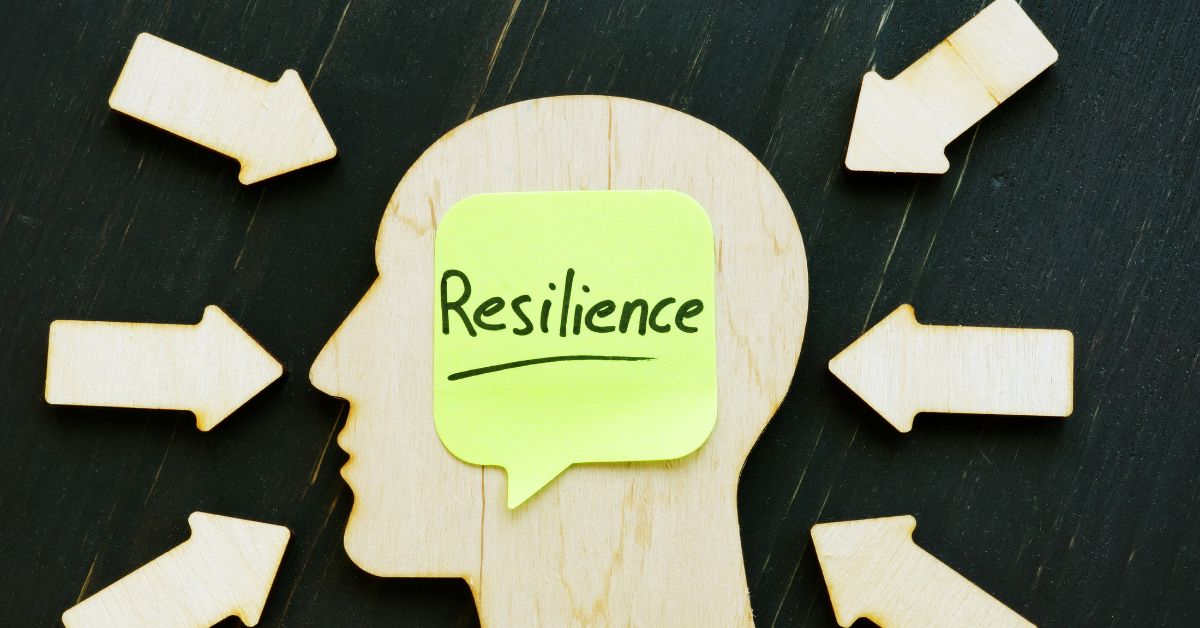Have you ever wondered why some people seem to be more prone to addiction than others?
Are they simply born this way, or is it a result of their environment and upbringing?
In this article, we’ll get into the complex interplay between genetics and environment and peek behind the curtains.
A Brief Overview

Before we dive into the heart of the matter, it’s important to understand what addiction is and the different types of addiction that exist.
At its core, addiction is a chronic brain disorder characterized by compulsive engagement in rewarding stimuli, despite adverse consequences. It can manifest in various forms, including substance abuse and addiction (e.g., drugs like cocaine and alcohol) and behavioral addiction (e.g., gambling, sex, internet).
FREE: Get the 3 pieces of advice that helped me understand this disease of addiction
The effects of addiction are far-reaching and can have devastating consequences on individuals, families, and society as a whole.
In fact, according to the National Survey on Drug Use and Health, nearly 21 million Americans struggle with addictive disorders, revealing the alarming prevalence of addiction.
The Nature vs. Nurture Debate

For decades, the “nature vs. nurture” debate has been a hot topic in the world of addiction research. Are addicts born with a genetic predisposition to addiction, or does their environment play a more significant role in shaping the risk of developing this disorder?
To put it simply, the answer is yes – to both. Studies have shown that addiction to drugs and alcohol is a result of a complex interplay between genetics and environment. Let’s take a closer look at how these factors influence the susceptibility to addiction.
Genetics and Addiction

Genetic Factors
When it comes to addiction, it’s not just nurture but also nature. Genetic factors account for 40-60% of the risk for addiction, illustrating how the DNA of a person can influence their vulnerability to addictive behaviors.
However, it’s important to note that multiple genes are involved in addiction risk, making it a complex dance between genetic and environmental factors.
For example, specific genes are associated with addiction, such as those involved in dopamine, serotonin, and other neurotransmitter systems. These genes can impact how the brain’s reward system functions, potentially leading to increased susceptibility to addictive drugs or behaviors.
Imagine dopamine as the party guest that brings fun and excitement to the table, while serotonin plays the role of the calm, soothing friend. When these guests are not balanced, the party goes awry.
Epigenetics
Epigenetics, or the study of how environments and experiences shape gene expression, adds another layer to the complexity of addiction. Life experiences are capable of causing epigenetic changes that can impact a person’s susceptibility to addictive disorders.
UPDATED: Discover the 3 life-changing things about addiction I wish I knew years ago
Intriguingly, these epigenetic changes can be passed down through generations, a phenomenon known as transgenerational epigenetic inheritance. Picture a family heirloom being passed down, but instead of a precious artifact, it’s a vulnerability to addiction.
Gene-Environment Interactions
Can an individual’s genes influence the impact of environmental factors on their risk for addiction?
Absolutely.
A person’s genes can influence how they respond to their environment, shaping their addiction risk. In the world of addiction research, there are countless examples of gene-environment interactions.
For instance, individuals carrying a specific gene variant may be more susceptible to the addictive effects of alcohol when exposed to stress or trauma. It’s like a faulty umbrella that fails to protect its user from the pouring rain of life’s challenges.
Gene-Environment Correlations
The relationship between an individual’s genes and the environment is not a one-way street. Genetic factors can also shape their exposure to specific environments, leading to active, evocative, and passive gene-environment correlations.
- Active correlation occurs when an individual’s genetic predispositions lead them to seek out environments that reinforce their tendencies, like a thrill-seeker pursuing adrenaline-inducing activities.
- Evocative correlation refers to how an individual’s genetic traits can elicit certain responses from their environment, such as a highly sensitive child attracting more attention and care from their parents.
- Passive correlation happens when the environment provided by parents, who share genetic traits with their child, influences the child’s development and susceptibility to addiction.
By acknowledging the role of genetics and environment, we can work together to develop effective strategies for addiction prevention and recovery, empowering individuals struggling with addiction to take control of their lives and overcome their unique challenges.
Environmental Factors and Addiction

Early Life Experiences
- Adverse childhood experiences (ACEs) and addiction risk: Have you ever wondered how early age experiences can shape one’s vulnerability to addiction? Experts believe that adverse childhood experiences (ACEs) such as trauma, abuse, and neglect can increase hereditary factors later in life. These experiences not only leave emotional scars but also impact the brain’s development, altering the way it processes stress and reward.
- Long-term consequences of ACEs on mental health and addiction vulnerability: The long-term consequences of these early life experiences also play a major role and can be devastating. Children who have experienced ACEs are more likely to develop mental health issues, such as depression and anxiety, which further increase their vulnerability to addiction. It’s a cruel cycle that can be difficult to break free from, but understanding the connection between early life experiences and addiction is crucial to healing and overcoming addiction.
Family Environment
- Parental substance use and modeling – While it can be difficult to determine whether or not addiction is hereditary, understand that children are like sponges, soaking up everything around them, often modeling their behavior after their parents. Growing up in a home where drug abuse is normalized, they are more likely to develop these unhealthy habits that are unintentionally or intentionally passed down from parents.
- Potential for addiction transmission through social learning – Learning doesn’t stop at childhood. This means that even as a person grows older, they continue to be influenced by those around them. Addiction can be passed through social learning, where individuals adopt addictive behaviors like alcoholism and drug abuse after witnessing them in their social environment.
- Family dynamics and addiction risk – It’s not just about substance use, though. Family dynamics play a critical role in addiction risk. Factors such as family dysfunction, conflict, and poor communication can create a toxic environment that contributes to the risk of addiction. For example, children who grow up in families with high levels of conflict are more likely to turn to substances as a means of escape or coping mechanism.
GET: The 3 things that actually "allowed" me to help my son (and regain control again)
Peer and Social Influences
- Impact of peer pressure on substance use: We’ve all heard the phrase “peer pressure,” but what truly, is its impact on addiction? From a very young age, individuals can be influenced by peers and their behaviors which can lead to addiction. Peer pressure is a powerful force that pushes individuals towards substance use, even if they initially have no interest in it.
- Role of social networks and peer norms in shaping behavior: As if peer pressure wasn’t enough, social networks and the norms within them also play a significant role in shaping one’s behavior. When anyone is surrounded by people who engage in substance use and abuse drugs, it becomes a more accepted and accessible behavior. The availability and accessibility of substances within these social networks further exacerbate the risk of addiction.
- Influence of community and cultural factors on addiction risk: Last but not least, let’s not forget the role of community and cultural factors in addiction risk. Factors such as socioeconomic status, cultural norms, and community resources can all influence an individual’s risk of developing an addiction. For example, living in a community with limited access to mental health services or healthy recreational activities can increase the likelihood of turning to substances for relief or entertainment.
Protective Factors

Genetic Resilience
Did you know that genetics can aid in resisting addiction?
That’s right; some individuals carry protective genes that reduce their risk of developing or suffering from addiction. It’s as if nature has equipped them with an invisible shield, guarding them from the clutches of addiction. But it’s also essential to remember that our environment plays a significant role in how these genetic factors manifest themselves.
For instance, studies have identified certain genes, such as OPRM1 and CHRNA5, that can influence a person’s vulnerability to addiction. However, these genes don’t guarantee that someone will or won’t become addicted. Instead, they interact with environmental factors, like exposure to alcohol and drugs or a supportive family environment, to determine the overall risk.
Environmental Resilience
Ah, the power of a nurturing environment! It makes a difference when it comes to mitigating addiction risk. Understand this: A supportive family environment, positive peer relationships, and access to education, employment, and healthcare can work wonders in building resilience against addiction.
Think about it: When surrounded by caring individuals, meaningful activities, and access to essential resources, people are less likely to turn to substances for solace. You see, a strong support system acts as an anchor to keep anyone grounded, even in the face of adversity.
Personal Protective Factors
It is also possible to cultivate personal qualities that reduce addiction problems. Developing traits like self-regulation and problem-solving skills can empower individuals to better handle stress and resist the temptation of substance abuse. However, some personality traits, such as impulsivity and sensation-seeking, may increase addiction issues and vulnerability.
Recognizing these traits and working on self-awareness and self-improvement can help. For example, someone who’s prone to impulsivity might benefit from mindfulness practices, which can promote self-control and reduce impulsive behaviors.
Positive Life Experiences
Here’s a secret: A treasure trove of positive life experiences can boost one’s resilience against addiction. This strategy involves filling one’s emotional tank with nourishing fuel that helps them keep going even when faced with difficult situations.
Engaging in hobbies, celebrating achievements, and nurturing supportive relationships can all contribute to this reservoir of positivity.
And guess what?
The more meaning and purpose anyone finds in life, the less likely they are to seek solace in drugs or alcohol.
By understanding and cultivating these genetic, environmental, and personal factors, we can reduce the risk factors for addiction and help others do the same. It’s all about building resilience and fostering a sense of purpose, one step at a time.
Assessing and Managing Inherited Risk

Identifying Genetic and Environmental Risk Factors
Genetic Testing and Counseling
Genetic testing has become increasingly popular in recent years as a way to assess an individual’s risk of developing certain genetic conditions. When it comes to addiction, genetic testing can help identify specific gene variations that may make an individual more susceptible to addiction.
However, it’s important to note that genetic testing is not a crystal ball – just because someone has a gene variation associated with addiction does not mean that they will develop an addiction.
GET: The 3 things that actually "allowed" me to help my son (and regain control again)
That being said, genetic testing can be a useful tool in assessing inherited risk and creating a personalized treatment plan. Genetic counseling can also be beneficial in helping individuals and their families understand the results of genetic testing and how they may impact their risk of developing an addiction.
Evaluating Family History
While genetic testing can provide valuable insights, it’s important to also look at an individual’s family history and environmental factors when assessing inherited risk. Research has shown that individuals with a family history of addiction are at a higher risk of developing addiction themselves. Additionally, environmental factors such as stress, trauma, and social influences can also contribute to an individual’s risk of developing addiction.
By taking a comprehensive approach and looking at all of these factors together, we can get a better understanding of an individual’s risk profile and create a treatment plan that addresses their unique needs.
Empowering Individuals and Families
Understanding individual risk profiles can help individuals and their families take a proactive approach to managing their susceptibility to developing an addiction.
By identifying potential risk factors and creating a personalized treatment plan that addresses their unique needs, individuals can take charge of their health and well-being.
Prevention and Intervention Strategies
Wouldn’t it be great if we could simply press a button and prevent addiction from ever taking root? Unfortunately, it’s not that simple. However, there are evidence-based approaches that have been proven to reduce the risk of addiction. One such approach is called Motivational Interviewing, a powerful communication strategy that helps individuals address their ambivalence about change. Picture a gentle, empathic conversation that acknowledges the person’s fears and uncertainties while also encouraging them to explore their own motivations for change. Research has shown that this approach can be effective in preventing substance abuse and relapse.
Family-based prevention programs
A strong family support system plays a crucial role in preventing addiction.
Family-based prevention programs are designed to strengthen family bonds, improve communication, and teach coping skills to both parents and children. Picture a family sitting down together, openly discussing their feelings, challenges, and successes in a nurturing and supportive environment. Programs like the Strengthening Families Program have been proven to reduce substance use and improve family functioning in various age groups.
School and community-based interventions
Schools and communities can also play a vital role in preventing addiction. A classroom where students learn about the dangers of substance abuse, are encouraged to develop healthy coping strategies, and are empowered to make wise choices could contribute to preventing addiction. Programs like the Life Skills Training Program teach students about the risks of illicit substance use, enhance their self-esteem, and help them develop skills to resist peer pressure. Community-based interventions, such as Project Towards No Drug Abuse, have also shown promising results in reducing substance abuse and related problems among adolescents and young adults.
FREE: Get the 3 pieces of advice that helped me understand this disease of addiction
Policies and regulations to limit substance availability
Sometimes, prevention starts with the big picture.
Policies and regulations can play a crucial role in limiting the availability of addictive substances. For instance, raising the legal drinking age, implementing stricter tobacco regulations, and enacting prescription drug monitoring programs have all been shown to significantly reduce substance abuse rates. The key is to strike a balance between respecting individual freedoms and protecting public health.
Treatment Approaches for Individuals with Inherited Risk
Personalized Treatment Strategies
How can we tailor addiction treatment based on genetic and environmental risk factors? One approach involves utilizing advances in pharmacogenetics, which is the study of how a person’s genetic makeup affects their response to medications. Imagine a world where your doctor could prescribe the most effective medication for your addiction based on your unique DNA, reducing the likelihood of adverse side effects and improving the chances of a successful recovery. This isn’t science fiction anymore; it’s rapidly becoming a reality.
In addition to medication, other personalized treatment strategies that can be employed to reduce addictions include:
- Behavioral and cognitive therapies that address individual patterns and triggers
- Mindfulness practices, like meditation and yoga, which help to strengthen emotional self-regulation
- Nutritional and lifestyle guidance, as both physical and mental health, are interconnected
Family and Systems-Based Therapies
Inherited risk doesn’t operate in a vacuum; it’s often intertwined with family dynamics and intergenerational patterns of addiction. As such, involving family members in treatment can be a powerful way to break the cycle and foster healing. Here are some approaches that can be particularly effective:
- Family therapy: This approach focuses on identifying and addressing underlying relational issues that may be contributing to addiction. By working together, families can develop healthier communication patterns, rebuild trust, and support each other in the recovery process.
- Multisystemic therapy (MST): MST is a comprehensive and intensive approach that addresses multiple aspects of an individual’s life, including family, peers, school, and community. By targeting these multiple systems, MST can help to create a more supportive environment for individuals with an inherited development of addiction.
- Attachment-based therapy: Research has shown that secure attachment is a protective factor against addiction. Attachment-based therapy helps to repair and strengthen the emotional bonds between family members, fostering a sense of safety and support that is crucial for recovery.
So, as you can see, there is no one-size-fits-all approach to treating addiction in those with an inherited risk. Instead, it’s essential to tailor the treatment to the individual’s unique needs and circumstances, incorporating a combination of personalized strategies, family involvement, and systemic interventions. The journey to recovery may be challenging and complex, but with the right tools and support, it is absolutely possible. Together, let’s strive to break the cycle of addiction and help our loved ones heal.
The Next Step?

Addiction is a complicated problem influenced by both our genes and the world around us. Our genes play a big role, but our experiences and environment matter too.
By building strong support networks, limiting access to substances, and providing education and resources, we can help individuals and families navigate the complex landscape of addiction and find a path to recovery.
Remember, no one is destined for addiction. With the right help, guidance, and determination, we can all rise above our circumstances and achieve lasting recovery.
GET: The 3 things that actually "allowed" me to help my son (and regain control again)
